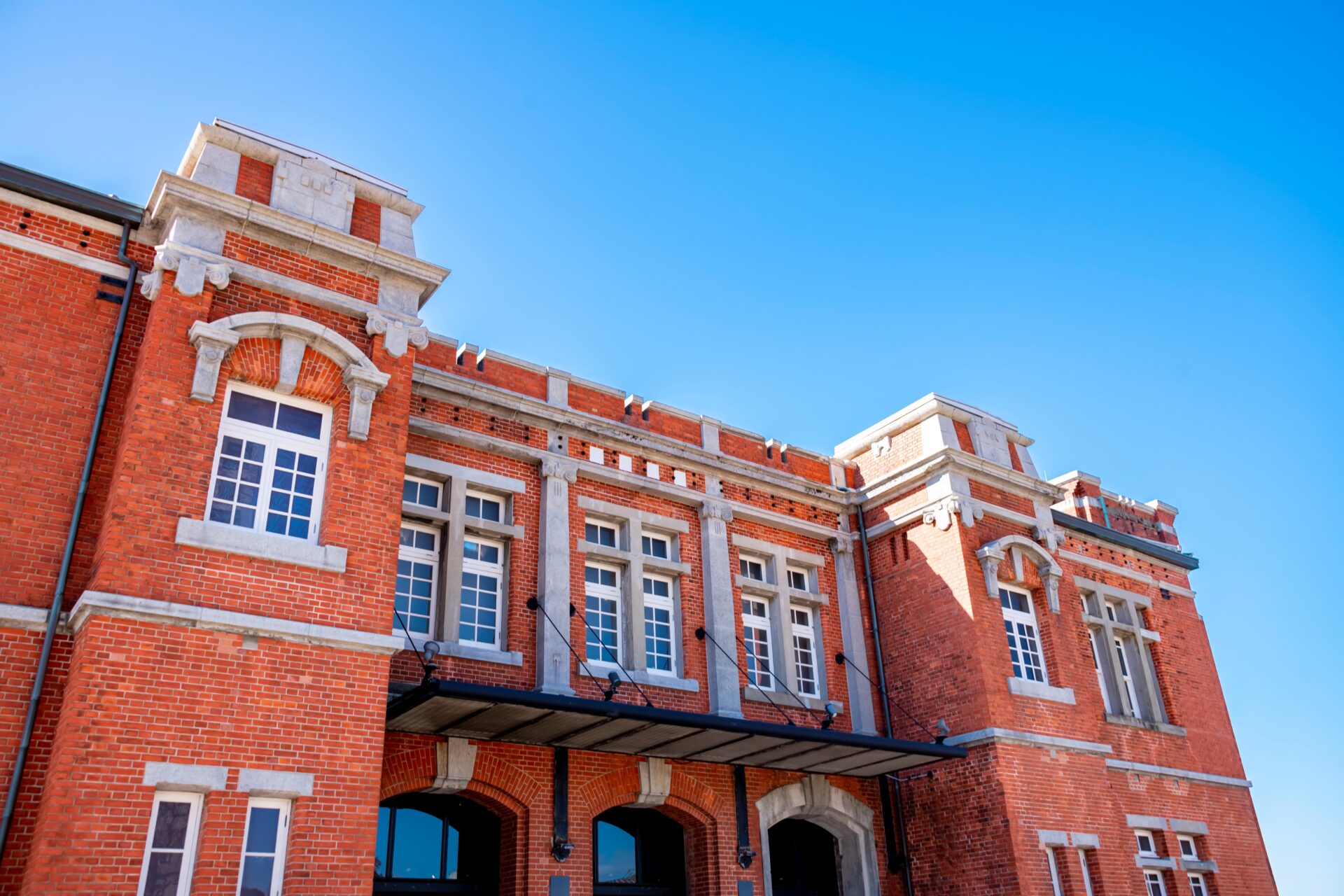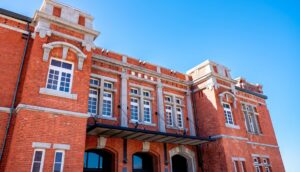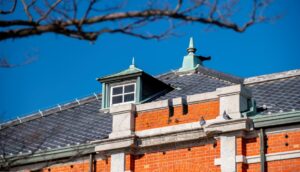
The historic buildings of the Kanmon Strait area were built during an era of widespread transformation, when Japan increasingly drew on Western cultural influences in shaping its new, “modern” society. These buildings are visible testaments to that change. The characteristics of each period’s architecture reflect the country’s developing identity, and it is possible to distinguish between these broad architectural periods using a few key design elements.
Western influence on local architecture first appeared after the US envoy Commodore Matthew C. Perry (1794–1858) sailed his fleet into Uraga Bay (near Tokyo) in 1853, and thus forced an end to over 200 years of Japanese seclusion. As other foreign powers including France and Britain gained access to Japanese ports in 1858, outside ideas and technology flooded into the country. A style known as pseudo-Western architecture (giyōfū kenchiku) was developed by Japanese carpenters, who creatively used traditional methods to replicate the appearance of Western architectural features such as stonework and towers.
Meiji Architecture (1868–1912)
The pseudo-Western style expanded during the Meiji era as the Japanese government invited architects and engineers from abroad and sent young people overseas to study. One of the most influential foreign experts was British architect Josiah Conder (1852–1920), who became a professor at the Imperial College of Engineering in Tokyo in 1877. Many of his students went on to become highly successful architects. Of them, Tatsuno Kingo (1854–1919) designed several buildings in the Kanmon Strait region, and Tsumaki Yorinaka (1859–1916) oversaw the designs for the Moji Customs House.


Red brick was widely imported from the West during this period, and the distinctive material has become a symbol of the Meiji era. The Former British Consulate is one example of buildings designed by foreign architects using red brick and following a thoroughly Western aesthetic. Such buildings were often governmental, corporate, or educational buildings, but some private structures (such as storefronts and warehouses) were also built in this style. Generally speaking, the presence of red brick is a clear sign of late-1800s or early-1900s architecture.
